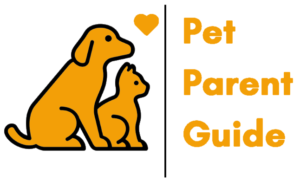
Recognizing and Managing Stress and Anxiety in Pets :
Do you often notice your furry friend showing signs of stress or anxiety? It’s essential to understand how to recognize and manage these emotions in pets. Whether you’re wondering how to stop anxiety in dogs, calm anxiety in older dogs, or deal with separation anxiety in rescue dogs, we’ve got you covered.
Does your one-year-old dog display anxiety symptoms? Don’t worry, we’ll explore ways to tackle it. Managing anxiety in elderly pets is crucial for their well-being, and we’ll provide you with helpful tips. If you have a six-month-old puppy experiencing anxiety, we’ll guide you through it.
Sometimes, older dogs can develop severe anxiety, but we’ll discuss strategies to cope. Additionally, we’ll address managing aggression in dogs to create a harmonious environment. So, let’s dive in and learn how to recognize and manage stress and anxiety in your beloved pets!
How to recognize stress and anxiety in pets?
Managing anxiety in dogs requires patience, consistency, and understanding. If your pet experiences severe anxiety or aggression, consult a qualified veterinarian or animal behaviourist for specialized guidance. Together, you can create a tailored plan to address your pet’s specific needs and improve their overall well-being.
- Watch for behavioural changes: Keep an eye out for unusual behaviours such as excessive barking, pacing, restlessness, destructive chewing, or sudden aggression. These can indicate stress or anxiety in dogs.
- Pay attention to physical signs: Notice if your older dog shows signs like trembling, panting, excessive shedding, decreased appetite, or lethargy. These physical symptoms may suggest anxiety.
- Address separation anxiety: If your rescue dog becomes anxious when you leave, try gradual desensitization by leaving for short periods and gradually increasing the time. Provide comforting items like toys or a cosy blanket.
- Identify anxiety in young dogs: If your one-year-old dog displays excessive fear, becomes easily startled, or exhibits avoidance behaviours, it could be experiencing anxiety. Seek professional guidance for effective training techniques.
- Support your elderly pet: Older dogs may develop anxiety due to cognitive decline or physical discomfort. Create a calm environment, maintain a consistent routine, and consider providing supplements or medication as prescribed by a veterinarian.
- Help your puppy overcome anxiety: A six-month-old puppy might show anxiety during socialization or new experiences. Gradual exposure, positive reinforcement, and obedience training can help build confidence and reduce anxiety.
10 tips to manage stress and anxiety in pets
Each pet is unique, so it’s essential to find the strategies that work best for your companion. By implementing these tips, you can recognize and manage stress and anxiety in your beloved pet, creating a happier and healthier environment for both of you.
- Create a calm environment: Designate a quiet and cosy area for your pet where they can retreat when feeling stressed. Provide a comfortable bed, toys, and blankets to help them feel secure.
- Establish a routine: Dogs thrive on consistency, so establish a regular schedule for feeding, exercise, and rest. Having a predictable routine can help reduce anxiety and provide a sense of stability.
- Gradual desensitization: If your dog experiences separation anxiety, gradually expose them to short periods of alone time. Start with brief departures and gradually increase the duration. Reward calm behaviour to reinforce positive associations.
- Positive reinforcement: Reward your pet for calm and relaxed behaviour. Use treats, verbal praise, or gentle petting to reinforce positive emotions and encourage a sense of security.
- Mental stimulation: Engage your pet’s mind with interactive toys, puzzle feeders, or training sessions. Mental stimulation helps redirect their focus and distracts them from anxiety-inducing triggers.
- Seek professional help: If your pet’s anxiety is severe or persistent, consult a veterinarian or animal behaviourist. They can provide specialized guidance and recommend behaviour modification techniques or medication if necessary.
- Natural remedies: Consider using natural remedies, such as lavender aromatherapy or pheromone diffusers, which can have a calming effect on dogs. However, always consult with your veterinarian before introducing any new treatments.
- Regular exercise: Ensure your pet gets regular exercise to release pent-up energy, reduce stress, and promote overall well-being. Daily walks, playtime, or activities tailored to their energy level can help alleviate anxiety.
- Manage medical conditions: Some medical conditions, like diabetes, can contribute to anxiety in pets. Properly managing your pet’s health, including medication and diet, can help alleviate anxiety symptoms.
- Be patient and understanding: Managing anxiety takes time and patience. Be understanding of your pet’s progress and provide plenty of love, reassurance, and support. Remember, your presence and support make a significant difference in their well-being.
Lifestyle tips for the mental and physical well-being of pets
Remember, each pet is unique, so tailor your approach to meet their specific needs. With your love, care, and attention, you can ensure a happier and healthier life for your beloved furry friend. By incorporating these lifestyle practices into your pet’s routine, you can enhance their mental and physical well-being.
- Prioritize regular exercise: Engage your pet in daily physical activities that match their energy level. Exercise helps alleviate stress, maintains a healthy weight, and promotes overall well-being.
- Provide a balanced diet: Feed your pet a nutritious and well-balanced diet tailored to their specific needs. Consult with a veterinarian to ensure they’re receiving the right nutrients for optimal health.
- Mental stimulation is key: Engage your pet’s mind with interactive toys, puzzles, and training sessions. Mental stimulation prevents boredom, reduces anxiety, and promotes cognitive health.
- Establish a consistent routine: Dogs thrive on routine, so create a structured schedule for feeding, exercise, and rest. Predictability helps reduce anxiety and provides a sense of security.
- Maintain regular vet check-ups: Schedule regular veterinary visits to monitor your pet’s overall health, address any concerns promptly, and ensure they receive necessary vaccinations and preventive care.
- Foster a safe and calm environment: Create a peaceful space for your pet with comfortable bedding, soothing music, and low-stress surroundings. Minimize loud noises and provide hiding spots for anxious pets.
- Socialize your pet: Expose your pet to various people, animals, and environments to help them develop social skills and build confidence. Proper socialization can reduce anxiety and prevent behaviour issues.
- Practice positive reinforcement: Reward good behaviour with treats, praise, and affection. Positive reinforcement helps establish trust, encourages desired behaviours, and strengthens the bond between you and your pet.
Conclusion
Prioritizing the mental and physical health of your pets is essential for their overall well-being. By incorporating regular exercise, a balanced diet, mental stimulation, and a consistent routine, you can create a healthy lifestyle for your furry companion. Additionally, maintaining regular vet check-ups, fostering a safe environment, socializing your pet, and practising positive reinforcement contribute to their overall happiness.
Remember, each pet is unique, so tailor your approach accordingly. With your love and care, you can ensure a fulfilling and joyful life for your beloved pets.
Frequently Asked Questions
Q1. Can anxiety in dogs cause coughing?
A1. While anxiety itself may not directly cause coughing in dogs, extreme stress or anxiety can lead to physical symptoms like coughing due to increased heart rate and respiratory changes. If your dog experiences persistent coughing or other concerning symptoms during periods of anxiety, it’s important to consult with a veterinarian to rule out any underlying medical conditions and determine the appropriate course of action.
Q2. How can I manage separation anxiety in older dogs?
A2. Managing separation anxiety in older dogs requires a gradual desensitization approach. Start by leaving them alone for short periods, gradually increasing the duration over time. Provide comforting items like toys or blankets and consider using calming techniques such as pheromone diffusers or soothing music. Consulting with a veterinarian or professional dog trainer can provide you with tailored strategies to address your older dog’s specific needs.
Q3. What can I do to calm anxiety in older dogs?
A3. To calm anxiety in older dogs, creating a calm environment is crucial. Establish a routine, provide a comfortable and safe space, and ensure they receive regular exercise and mental stimulation. Consider using natural remedies like lavender aromatherapy or consult with your veterinarian for appropriate supplements or medications if needed.
Q4. How can I manage aggression in dogs?
A4. Managing aggression in dogs requires professional guidance. Start by consulting with a veterinarian or animal behaviourist who can assess the underlying causes and develop a behaviour modification plan. This may involve training techniques, counter-conditioning, and desensitization exercises. It’s important to address aggression promptly and consistently to ensure the safety of both your dog and those around them.

